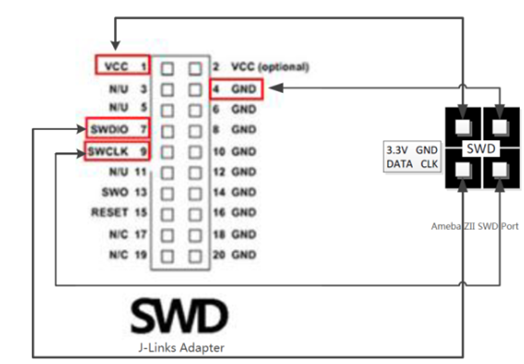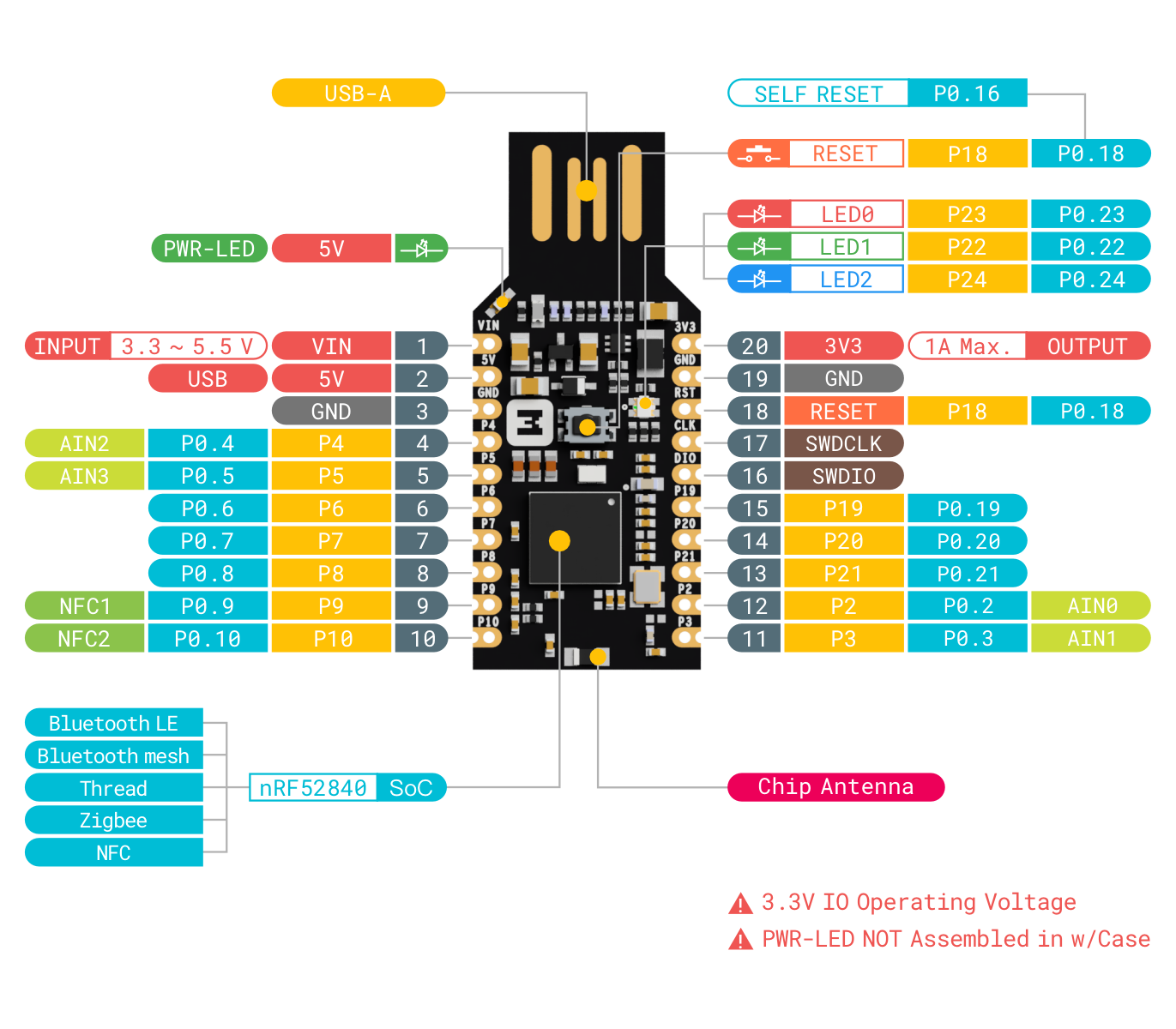update - не смог сейчас даже u2f bootloader засунуть на mdk. перешёл на nordic
update2 - починил. корректная команда обновленя на u2f -
nrfutil dfu serial -pkg uf2_bootloader-0.2.13-44-gb2b4284-nosd_signed.zip -p COM7
полностью снёс nrfutil и поставил последний. Заработало!
инстуркции https://github.com/google/OpenSK/blob/stable/docs/boards/nrf52840_dongle.md
https://github.com/google/OpenSK/blob/stable/docs/install.md
https://github.com/google/OpenSK/blob/develop/docs/install.md
сборка
./reset.sh
./setup.sh
Сорка очищалки памяти
./deploy.py --board=nrf52840_dongle_dfu --programmer=none --erase_storage
Сборка самой штуки
./deploy.py --board=nrf52840_dongle_dfu --opensk --programmer=none
После сборки очищалки\штуки просто залить hex через nrf connect programmer. Не забыть нажимать clear file чтоб не было наслоение файлов при прошивке.
Всё что ниже - старое.
ПОРТ МОЖЕТ МЕНЯТЬСЯ ПОСЛЕ ПРОШИВОК! ПРОВЕРЯТЬ ПОРТ ПЕРЕД КАЖДОЙ ПРОШИВКОЙ!
Для работы необходимо заменить загрузчик на u2f.
Для этого нужно установить утилитку nrfutil
pip install nrfutil
nrfutil dfu usb-serial -pkg uf2_bootloader-0.2.13-44-gb2b4284-nosd_signed.zip -p <your-serial-port-name>
Имя порта в формате COM<N> для винды.
Ссылка на инсрукцию и бутлоадеры - https://github.com/makerdiary/nrf52840-mdk-usb-dongle/tree/master/firmware/open_bootloader
После обновления bootloader'а необходимо зайти в режим прошивки (зажать кнопку при коннекте или два ража нажать на кнопку после подключения (см проблемы). Загрузить в корень открывшегося устройства opensk_nrf52840_mdk_usb_dongle_gece14d7.uf2 (ссылка - https://github.com/makerdiary/nrf52840-mdk-usb-dongle/tree/master/firmware/OpenSK)
После чего всё должно работать.
Ссылка на wiki - https://wiki.makerdiary.com/nrf52840-mdk-usb-dongle/opensk/getting-started/
Для того чтобы вернуть старый загрузчик нужна утилитка adafruit-nrfutil
pip3 install --user adafruit-nrfutil
adafruit-nrfutil --verbose dfu serial --package nrf52840_mdk_usb_dongle_open_bootloader_v1.2.0.uf2.zip -p <serial-port-name> -b 115200 --singlebank
Почему то путь не подцепился до adafruit-nrfutil. Указывал путь руками
C:\Users\Fasjeit\AppData\Roaming\Python\Python36\Scripts\adafruit-nrfutil.exe --verbose dfu serial --package nrf52840_mdk_usb_dongle_open_bootloader_v1.2.0.uf2.zip -p COM4 -b 115200 --singlebank
После прошивки на u2f bootloader не входит в режим bootloader'а при нажатии на кнопку во время подключения
Решение - два раза нажать на кнопку. Ссылка - https://learn.adafruit.com/adafruit-feather-m0-express-designed-for-circuit-python-circuitpython/uf2-bootloader-details
Проблема в том, что кнопку можно настроить на ребут, что и происходит при использовании примеров из Nordic SDK. Выставляется переменная, которая влияет на функционирование кнопки. В результате данных режим сохраняется даже при перепрошвке. Решение - прошить прошивкой, которая сбрасывает данный флаг. ссылка - makerdiary/nrf52840-mdk-usb-dongle#14 ещё ссылка - makerdiary/nrf52840-mdk-usb-dongle#9 прошивка - https://github.com/makerdiary/nrf52840-mdk-usb-dongle/tree/master/examples/nrf5-sdk/pselreset_erase/hex
Если удачно прошиться версией для nordiс токена, то кнопка будет ребутать устройство (из за различной распиновки) при нажатии. При это зайти в u2f загрузчик не будет возможно. Решение прошивка через вшешний программатор. Через rPi не получилось. Купил j-link, через него заработало.
Распиновка j-link
Закинул u2f bootloader отсюда черезj-flash lite. Выбирал просто nrf52840 со стандартными параметрами. Hex файл залился, загрузчик работает.
This repository contains a Rust implementation of a FIDO2 authenticator.
We developed this as a Tock OS application and it has been successfully tested on the following boards:
This project is proof-of-concept and a research platform. It's still under development and as such comes with a few limitations:
Although we tested and implemented our firmware based on the published CTAP2.0 specifications, our implementation was not reviewed nor officially tested and doesn't claim to be FIDO Certified.
We're currently still in the process on making the ARM® CryptoCell-310 embedded in the Nordic nRF52840 chip work to get hardware-accelerated cryptography. In the meantime we implemented the required cryptography algorithms (ECDSA, ECC secp256r1, HMAC-SHA256 and AES256) in Rust as a placeholder. Those implementations are research-quality code and haven't been reviewed. They don't provide constant-time guarantees and are not designed to be resistant against side-channel attacks.
For a more detailed guide, please refer to our installation guide.
-
If you just cloned this repository, run the following script (Note: you only need to do this once):
./setup.sh
-
If you have a Nordic development board that doesn't already have Tock OS installed, you can install both TockOS and the OpenSK application by running the following command, depending on the board you have:
# Nordic nRF52840-DK board board=nrf52840dk ./deploy.sh os app # Nordic nRF52840-Dongle board=nrf52840_dongle ./deploy.sh os app
-
If Tock OS is already installed and you want to install/update the OpenSK application on your board (Warning: it will erase the locally stored credentials), run:
./deploy.sh app
-
On Linux, you may want to avoid the need for
rootprivileges to interact with the key. For that purpose we provide a udev rule file that can be installed with the following command:sudo cp rules.d/55-opensk.rules /etc/udev/rules.d/ && sudo udevadm control --reload
If you build your own security key, depending on the hardware you use, there are a few things you can personalize:
- If you have multiple buttons, choose the buttons responsible for user presence in main.rs.
- Decide whether you want to use batch attestation. There is a boolean flag in
ctap/mod.rs. It is mandatory for U2F, and you can create your own self-signed certificate. The flag is used for FIDO2 and has some privacy implications. Please check WebAuthn for more information. - Decide whether you want to use signature counters. Currently, only global
signature counters are implemented, as they are the default option for U2F.
The flag in
ctap/mod.rsonly turns them off for FIDO2. The most privacy preserving solution is individual or no signature counters. Again, please check WebAuthn for documentation. - Depending on your available flash storage, choose an appropriate maximum
number of supported residential keys and number of pages in
ctap/storage.rs.
To protect and carry your key, we partnered with a professional designer and we are providing a custom enclosure that can be printed on both professional 3D printers and hobbyist models.
All the required files can be downloaded from Thingiverse including the STEP file, allowing you to easily make the modifications you need to further customize it.
See Contributing.md.


